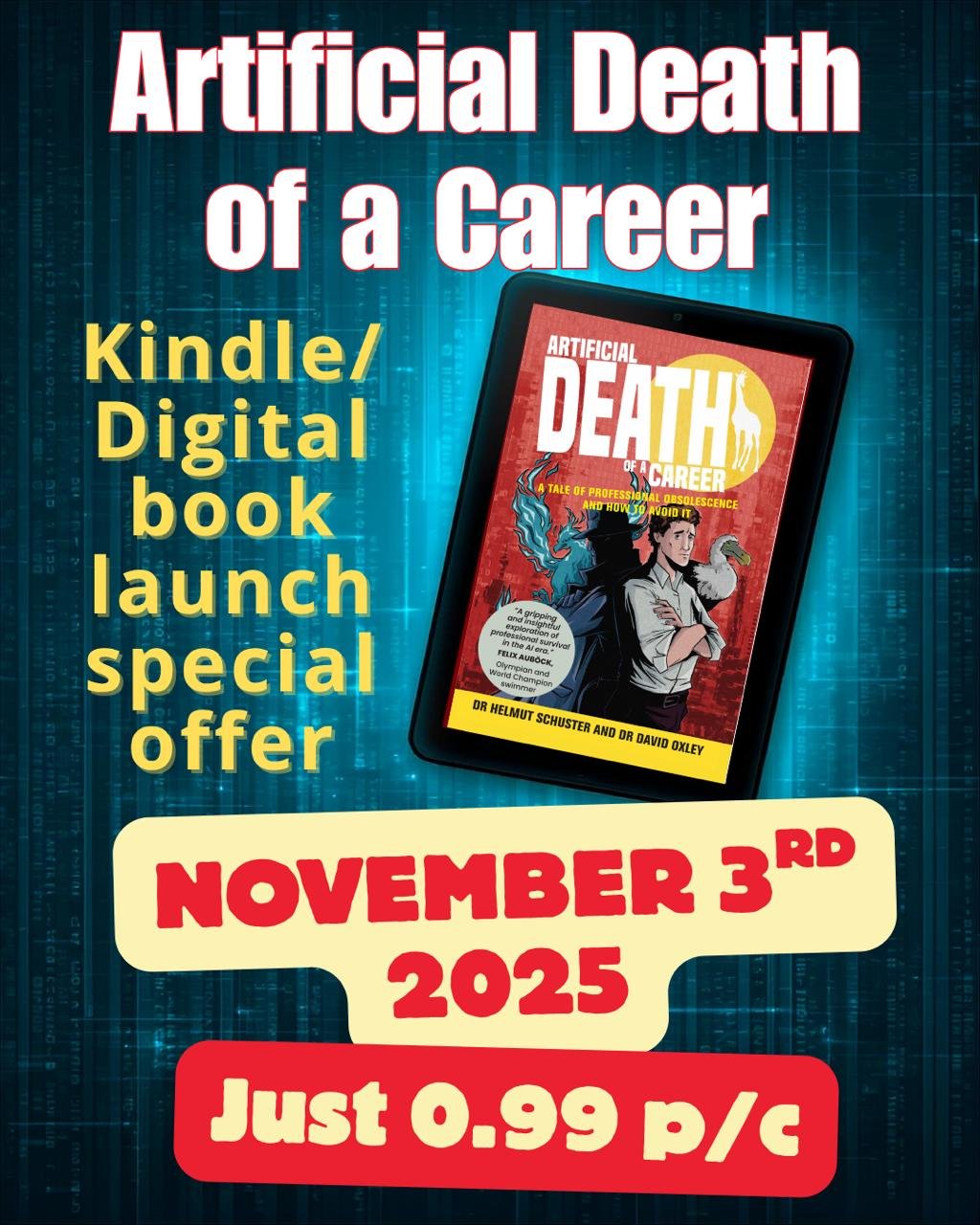Learning and Development Trends for 2025: Shaping the Future of Workplace Learning
As we approach 2025, the Learning and Development (L&D) field is evolving at an unprecedented pace. Driven by technological advancements, shifting workforce expectations, and the need for agility in a volatile business landscape, L&D leaders are at the forefront of organizational transformation. As a Chief Learning Officer, I see 2025 as a year of exciting possibilities underpinned by trends that will redefine how we engage, upskill, and empower our workforce.
I will share insights into the top trends shaping L&D in 2025 in this article. These trends are not mere predictions but forward-looking strategies rooted in data and industry practices designed to help organizations remain competitive, resilient, and innovative.

1. AI-Driven Personalization: Tailoring Learning for Impact
Artificial Intelligence (AI) continues to be a game-changer in L&D. In 2025, AI-driven personalization will dominate corporate learning strategies, creating hyper-personalized learning paths for employees. Gone are the days of one-size-fits-all training; employees now expect training tailored to their unique roles, skill levels, and career aspirations.
AI-powered platforms analyze employee performance, learning preferences, and skill gaps to deliver content that resonates with individual learners. These systems ensure that learning is both efficient and effective, reducing time spent on irrelevant material while enhancing retention. For example, AI can detect when an employee struggles with a particular concept and dynamically generate additional resources or simulations to bridge the gap.
Why It Matters:
Personalized learning enhances engagement, aligns with individual goals, and drives measurable outcomes. For organizations, this translates into higher ROI from learning investments and a workforce equipped to meet future challenges.
2. Upskilling, Reskilling, and Right-Skilling: Preparing for the Future
The rapid pace of technological change and shifting market demands necessitate continuous skill development. Upskilling focuses on enhancing existing skills to stay current, reskilling equips employees for entirely new roles, and right-skilling ensures that employees possess the precise competencies required for their positions.
In 2025, organizations will prioritize skill agility, enabling employees to transition seamlessly between roles or adapt to emerging challenges. This approach ensures business continuity and empowers employees to see a clear trajectory for their growth within the organization.
Why It Matters:
With 23% of global jobs expected to undergo significant changes in the next five years, skill development is essential for organizational resilience and talent retention.
3. Microlearning and Just-in-Time Training: Meeting Learners Where They Are
Microlearning—delivering bite-sized, focused content—has emerged as a preferred method for modern learners with busy schedules. In 2025, this trend will become even more prominent as organizations embrace just-in-time learning to provide employees with immediate, actionable insights.
This approach is particularly effective for onboarding, compliance training, or refreshing critical skills. By making learning accessible on mobile devices, employees can integrate learning into their workday without disruptions.
Why It Matters:
Microlearning aligns with today’s fast-paced work environments, boosting knowledge retention and application. It also fosters a culture of continuous learning, where employees can access what they need, when they need it.
4. Immersive Learning (AR/VR/XR): Transforming Training Through Technology
Immersive learning technologies, such as Augmented Reality (AR), Virtual Reality (VR), and Extended Reality (XR), are revolutionizing how employees learn. By simulating real-world scenarios, these technologies offer hands-on experiences in risk-free environments.
Immersive learning provides a safe way for industries like healthcare, manufacturing, and retail to practice skills, make decisions, and understand complex processes. As their accessibility improves, we will see wider adoption of these tools in 2025.
Why It Matters:
Immersive learning enhances engagement, accelerates skill acquisition, and boosts confidence by replicating real-world challenges. Organizations that leverage these tools will gain a competitive edge in employee readiness.
5. Data-Driven Learning and Analytics: Making Informed Decisions
In the era of digital transformation, data is king. In 2025, L&D leaders will rely heavily on data analytics to design, deliver, and measure learning initiatives. Data-driven insights enable organizations to identify skill gaps, evaluate the effectiveness of training programs, and optimize learning strategies in real-time.
Learning Eco-Systems (LeS) integrated with analytics tools will provide granular insights into employee performance, enabling a continuous feedback loop for improvement.
Why It Matters:
Data-driven learning ensures that every dollar spent on L&D delivers measurable value. It also empowers leaders to make informed decisions, aligning learning outcomes with organizational goals.
6. Employee-Centric and Community-Driven Learning: Building a Culture of Ownership
A thriving learning culture requires active participation from employees. In 2025, organizations will focus on employee-centric learning experiences that empower individuals to take ownership of their development. This will include user-generated content, peer-to-peer learning, and collaborative platforms.
Community-driven learning fosters knowledge sharing and leverages an organization’s collective expertise. Employees become both contributors and consumers of learning, creating a virtuous growth cycle.
Why It Matters:
Engagement increases when employees feel empowered to learn and share, and the organization benefits from a dynamic, self-sustaining learning ecosystem.
7. Focus on Leadership Development: Strengthening the Backbone
Effective leadership is critical to navigating complexity and change. In 2025, leadership development will extend beyond senior executives to include managers at all levels. Programs will emphasize experiential learning, coaching, and social connection, enabling leaders to build resilience and foster collaboration.
Organizations will also prioritize diversity and inclusion in leadership pipelines, ensuring representation and equity.
Why It Matters:
Investing in leadership development strengthens organizational culture, drives innovation, and ensures a steady supply of future-ready leaders.
Looking Ahead: Actionable Strategies for 2025
As we embrace these trends, L&D leaders must take proactive steps to prepare their organizations for the future:
- Leverage Technology: Invest in AI, immersive learning, and analytics to enhance learning impact.
- Create Personalized Pathways: Develop tailored programs that align with individual and organizational goals.
- Foster a Learning Culture: Encourage employee participation, collaboration, and shared ownership.
- Prioritize Leadership: Equip leaders with the skills to navigate complexity and inspire teams.
- Measure and Adapt: Use data to track progress, refine strategies, and demonstrate ROI.
By adopting these strategies, organizations can transform L&D from a support function into a strategic driver of business success.
The Road Ahead
The future of L&D is bright, filled with opportunities to innovate, inspire, and impact. As CLOs, we hold the unique responsibility of shaping this future, ensuring that learning becomes a cornerstone of organizational success.
2025 is not just a year of change; it’s a call to action. It’s a chance to reimagine learning, embrace technology, and empower our workforce to thrive in a dynamic world. Let us seize this opportunity to lead with vision and purpose, building organizations that are not only future-ready but future-proof.
Click Here to Join HR TODAY WhatsApp Channel
Read Also : People Analytics Teams Still Struggle to Deliver Business Impact, Warns The Josh Bersin Company













Comments 19